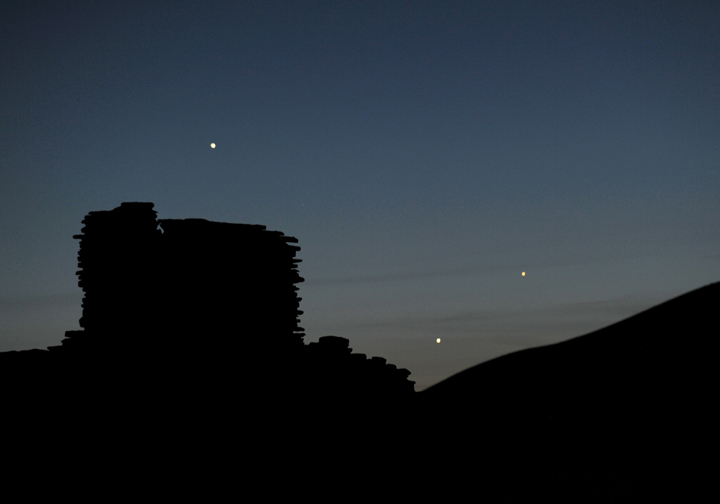If you haven’t had a chance to get outside to catch the rare line-up of five planets, you’re about to miss your chance.

For the past month Mercury, Venus, Saturn, Mars and Jupiter have all been visible at once, in the wee hours of the morning.
READ MORE: Astronomers find ancient star system with 5 Earth-size planets
However, as all the planets — including Earth — go about their orbits, two are about to be lost to the morning sun.
Mercury and Venus are already low in the east. As of Sunday, Mercury will be almost impossible to spot as it will be too low on the horizon, as well as being caught in the early morning sunlight.
Mercury is a challenging target at any time, as it orbits so close to the sun. If you have a pair of binoculars, you’ll be able to catch it Saturday morning about four degrees above the horizon if you have keen eyes (one degree is about the width of your pinky finger held at arm’s length).
But Venus will remain in the sky until the end of March. After that, it will be lost in the sun’s glare, only to come back to our sky — this time as an evening “star” — in August.

Get daily National news
But the good news is, there will still be three planets left for the coming months — Saturn, Mars and Jupiter.
To catch all three after Venus is lost, you’ll still have to be either a night owl or an early riser. By March 5, Mars won’t rise in the east until roughly 1 a.m., while Saturn rises about an hour earlier.
Jupiter, on the other hand, rises in the early evening around 8 p.m. by the end of February. The largest planet in our solar system is easy to spot: it will be the brightest thing in the sky, rising in the east and moving toward the west over the coming months.
However, Saturn, Mars and Jupiter will all be visible in the night sky — and at a decent hour — throughout the spring and summer.
If you want to plan a night of observing outside for yourself, you can use apps like Stellarium (iTunes or Android) or SkySafari (iTunesor Android) to figure out where the planets will be.
And check out this beautiful picture that Canadian astrophotographer Lynn Hilborn took: it’s a five-panel mosaic of the five planets over Cape Canaveral, Fla., this month.







Comments